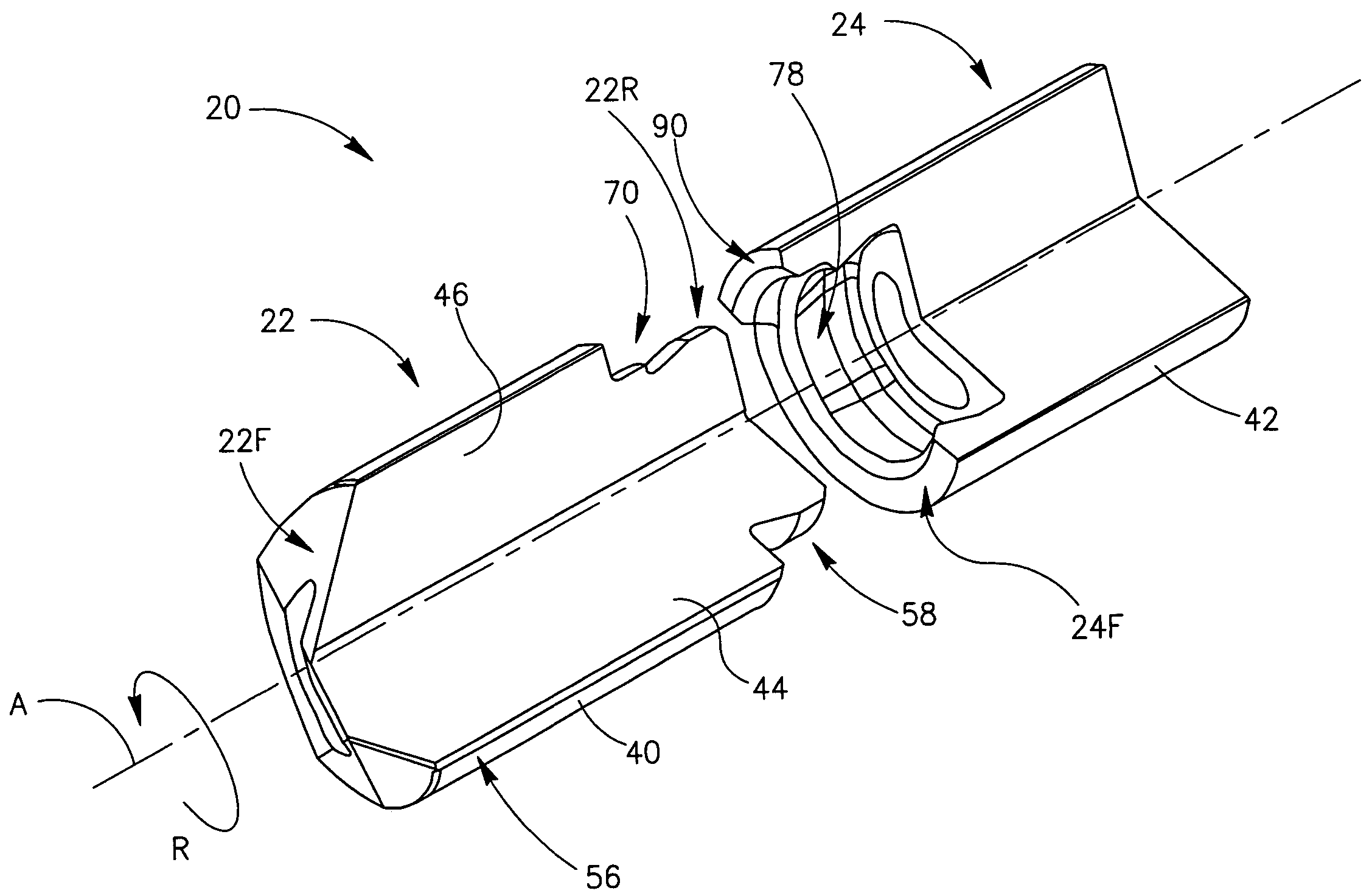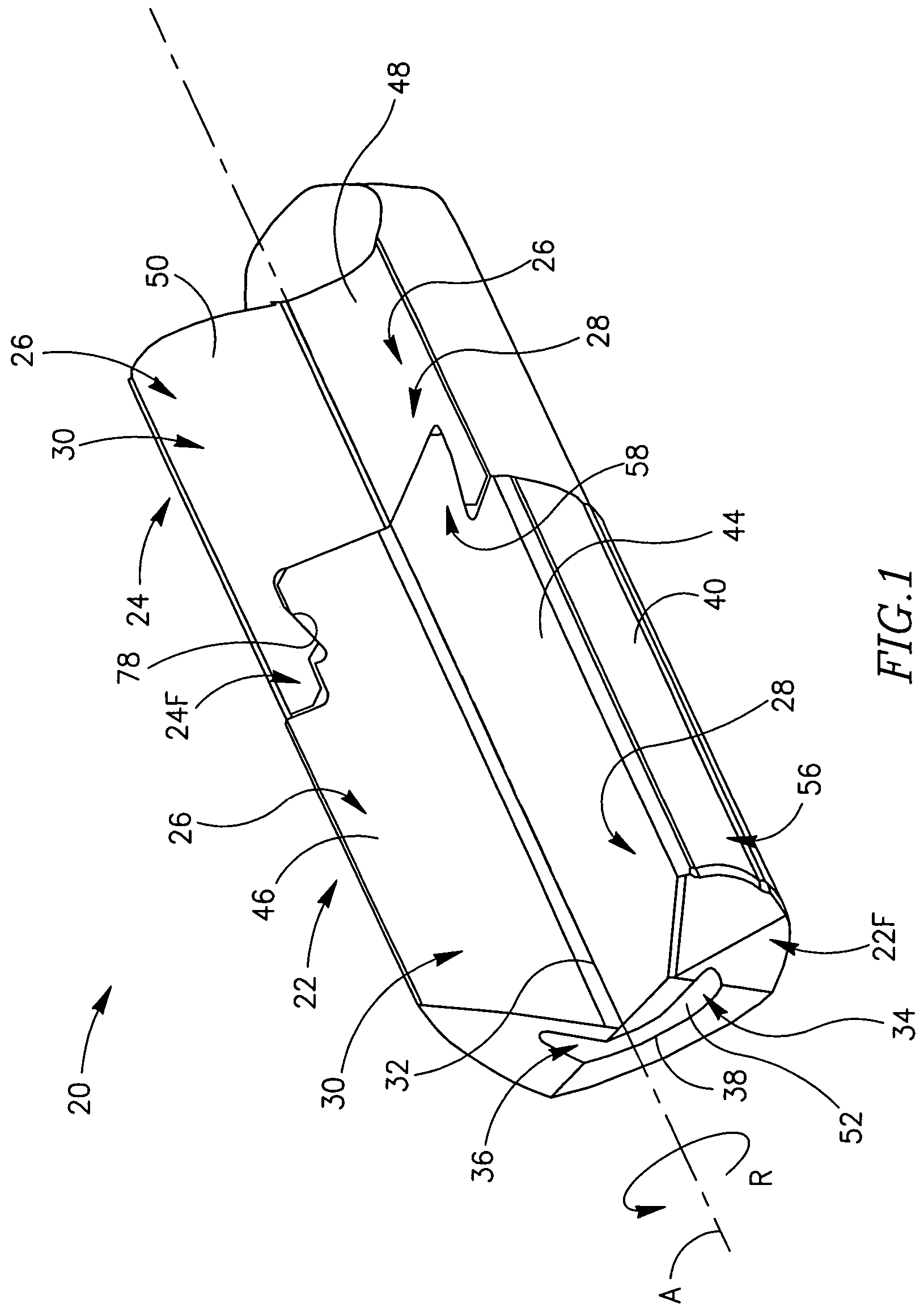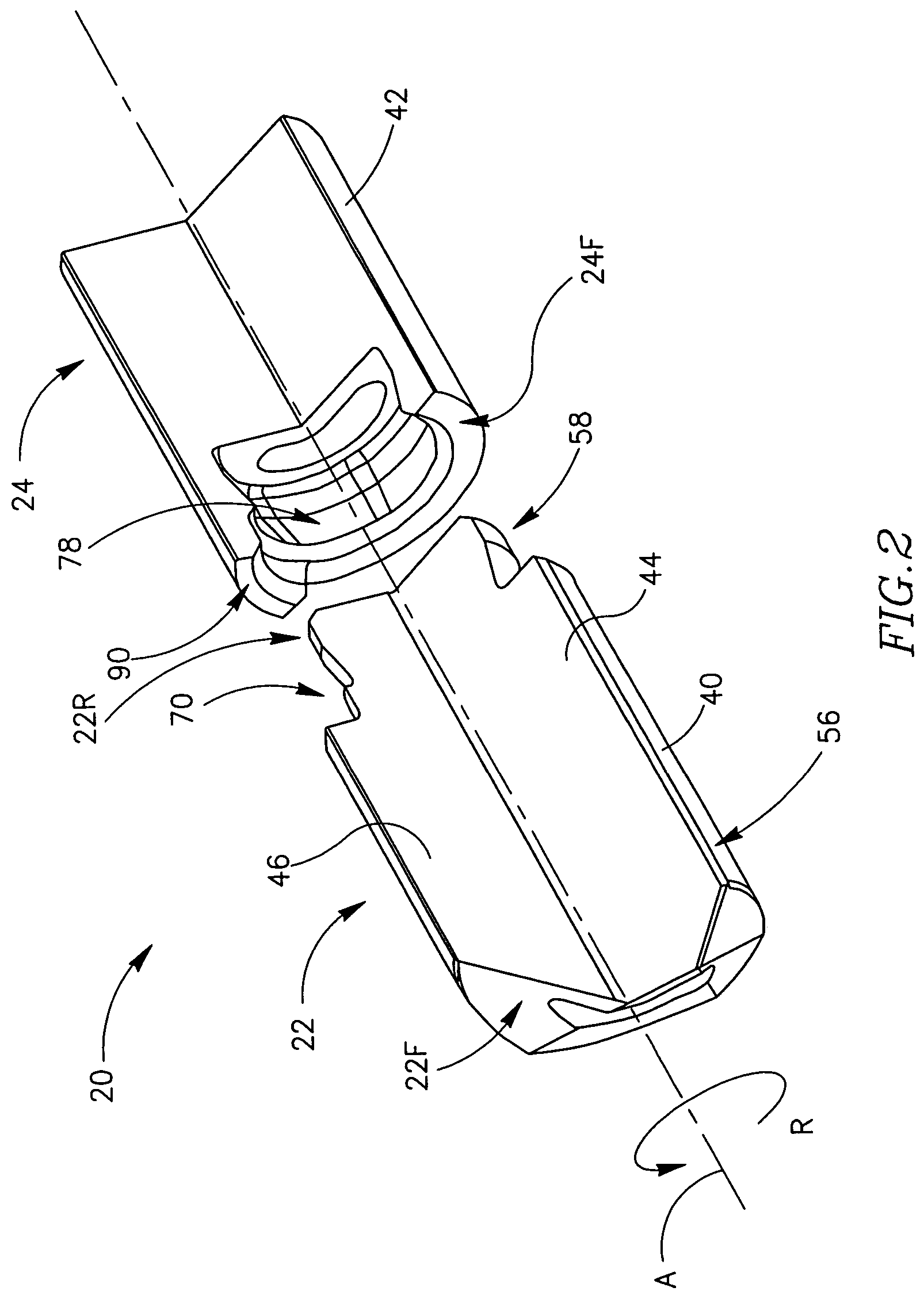Gun drill
a gun drill and assembly technology, applied in the field of gun drills, can solve the problems of loss of rotational alignment, difficulty in removing the tip, disturbance of fluid and chips flow,
- Summary
- Abstract
- Description
- Claims
- Application Information
AI Technical Summary
Problems solved by technology
Method used
Image
Examples
first embodiment
[0048]A gun-drill 20 in accordance with the present invention is shown in FIG. 1. The gun-drill 20 has a direction of rotation R around a longitudinal axis of rotation A defining a front-to-back direction, and comprises a cutting-head 22 detachably secured to a shank 24 at a shank forward end 24F. A single, straight flute 26 extends axially along the shank 24 and the cutting-head 22, and comprises leading and trailing faces 28, 30, disposed at a flute angle to each other. The flute leading and trailing faces 28, 30 meet at a flute apex 32 adjacent the axis of rotation A. The gun-drill 20 further comprises a fluid conduit 34 extending axially therethrough, comprising a conduit inner wall 36 and a fluid discharge outlet 38 at a cutting-head forward end 22F. When the cutting-head 22 is mounted in an operational, secured position in the shank 24, cutting-head and shank peripheral surfaces 40, 42, cutting-head and shank leading and trailing faces 44, 48, 46, 50, and cutting-head and shan...
second embodiment
[0058]The gun-drill 220 in accordance with the second embodiment has an axis of rotation A and a direction of rotation R defined much in the same manner as the axis of rotation A and a direction of rotation R of the gun-drill 20 in accordance with one embodiment. The gun-drill 220 has a cutting-head 222 detachably secured to a shank 224 at a shank forward end 224F. Both the shank 224 and the cutting-head 222 have a single, straight flute 226 extending axially along the shank 224 and the cutting-head 222. The flute has leading and trailing faces 228, 230 meeting at a flute apex 232 adjacent the axis of rotation A. A fluid conduit 234 having a conduit inner wall 236 and a fluid discharge outlet 238 formed at a cutting-head forward end 222F extends axially through the gun-drill 220. When the cutting-head 222 is mounted in an operational, secured position in the shank 224, cutting-head and shank peripheral surfaces 240, 242, cutting-head and shank leading and trailing faces 244, 248, 24...
PUM
| Property | Measurement | Unit |
|---|---|---|
| peripheral angle φC | aaaaa | aaaaa |
| peripheral angle φS | aaaaa | aaaaa |
| angle φS | aaaaa | aaaaa |
Abstract
Description
Claims
Application Information
 Login to View More
Login to View More - R&D
- Intellectual Property
- Life Sciences
- Materials
- Tech Scout
- Unparalleled Data Quality
- Higher Quality Content
- 60% Fewer Hallucinations
Browse by: Latest US Patents, China's latest patents, Technical Efficacy Thesaurus, Application Domain, Technology Topic, Popular Technical Reports.
© 2025 PatSnap. All rights reserved.Legal|Privacy policy|Modern Slavery Act Transparency Statement|Sitemap|About US| Contact US: help@patsnap.com



